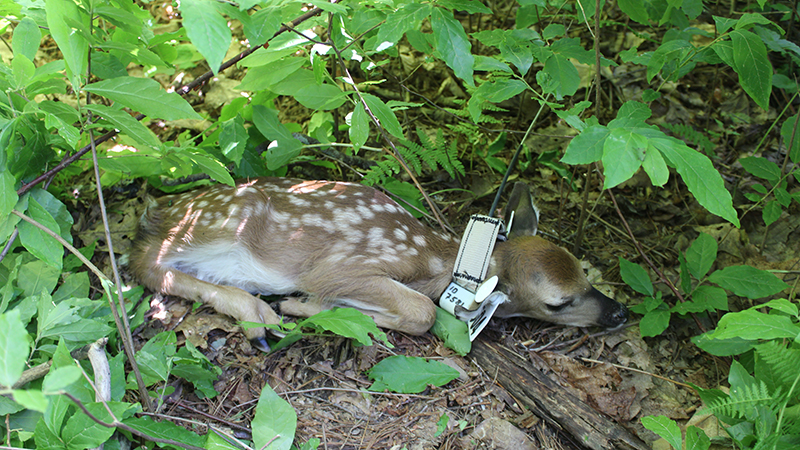
Project Team
Graduate Students
- Adam Edge
Collaborators
- Andrew Little
- Gino D'Angelo
- Karl Miller
Funding Source
Goal:
Evaluate fawn survival and specific sources of mortality to improve our understanding about the factors that might be limiting deer population growth in the North Georgia mountains.
Background:
Historically, deer populations in the Southern Appalachians have been an important source of recreation and sustenance for local residents. Also, thousands of hunters have traveled annually to the mountains of North Georgia to hunt deer, specifically on Wildlife Management Areas on the Chattahoochee National Forest.
In recent decades, Georgia Department of Natural Resources (DNR) documented significant decreases in deer harvest. It appears that deer populations have dramatically declined, as have hunter numbers. Since the early 2000s, timber harvests have nearly stopped entirely on the national forest, leaving only mature trees with little understory to provide food and cover for deer. At the same time, populations of black bears, coyotes, and bobcats have increased. Declines in deer numbers may be a function of predation, inadequate food availability, or other factors. DNR adjusted hunting seasons to decrease harvest of female deer, however deer numbers have continued to decrease.
The birth of fawns and their addition to the population over their first year allows deer populations to grow. After capturing does, Adam and the team fit them with vaginal implant transmitters (VITs). These VITs emit a radio signal at birth, which allows the research team to locate the birth site. When we capture the resulting fawns, we fit them with VHF telemetry collars and subsequently tract them for as long as the collars stay on them or until they die.
When collared fawns die, the radio signal from the collar changes due to inactivity. Adam tracks the signal to locate the collar and fawn carcass. Evidence on the fawn carcass and clues in the environment around it help to determine if a predator killed the fawn. Using laboratory testing of saliva DNA swabs from carcasses, we can identify the predators responsible for the death of fawns.
Adam also tracks fawns using radio-telemetry to determine what habitats they use. By comparing habitats used by fawns that survive versus those that do not live, we can begin to understand the relationship between habitats, deer, and predators. This information may assist managers in working to increase and enhance habitats important to deer.